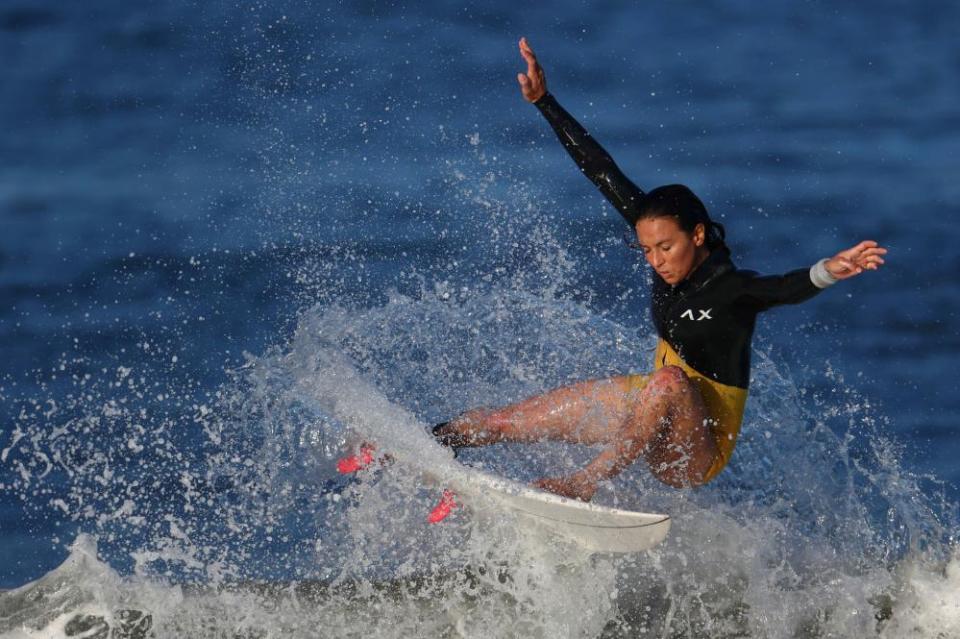Surf’s up: a watershed moment for boarders at the Tokyo Games

“We want to take sport to the youth,” said the IOC president, Thomas Bach, when announcing in 2016 that surfing would make its Olympic debut in Tokyo. Was that an expression of genuine altruism? Or an attempt at staying relevant to a generation that has become tired of traditional offerings? Or perhaps further evidence of the rampant commercialisation of the Games? It was probably a bit of all the above, but the first appearance at a Games is undeniably a watershed moment.
When the 40 competitors – a gender-equal cohort of 20 men and 20 women – paddle out into the waters off Tsurigasaki Beach on the morning of 25 July it will mark the culmination of a decades-long campaign by the International Surfing Association.
Related: Tokyo Olympics: attendance to be slashed at opening ceremony
That its debut finally comes in Japan may come as a surprise to the casual observer, but there is a strong existing surf culture in the country and the venue for the competition, 40 miles east of Tokyo, is an established surf spot known for its consistent, if not huge, swell.
But Tsurigasaki Beach is no Teahupo’o in Tahiti – one of the world’s best breaks and the completely offshore venue for the 2024 Paris Olympics – and the decision to eschew recent advances in wave technology in favour of the ocean is something of a dice roll by the organisers.
The Games arrive before peak typhoon season in Japan and the consistently excellent waves a manmade pool can produce are highly unlikely to be replicated naturally. To offset that degree of jeopardy, an eight-day window for the competition to be completed has been called, but depending on the swell that could be extended.
Organisers expect the two gold medals to be won within four days. The traditional powerhouses will surely be in the mix for those medals, with the seven-time world champion Stephanie Gilmore and the in-form Sally Fitzgibbons of Australia and Americans Carissa Moore (a four-time world champion) and two-times men’s world champion John John Florence among the favourites.

But a Brazilian could yet upstage them all: the spectacular high-flying duo Gabriel Medina and Italo Ferreira head to Tokyo first and second on the World Surf League standings while Tatiana Weston-Webb can mix with the best on her day. Home hopes are pinned on Kanoa Igarashi, who was born in California but holds dual citizenship.
Due to pandemic, athletes from the top nations provisionally qualified for the delayed Games off the back of their 2019 world rankings before guaranteeing their trip to Japan by appearing at the ISA World Surfing Games in El Salvador last month.
Teams comprise four members – two men and two women – and the format of the competition will mirror that of the WSL template: a series of 30-minute heats featuring four surfers in round one, five in round two and then two from round three onwards. Athletes can catch as many waves as they want during a heat, with their best two single wave scores (marked out of 10) making a final score out of 20. A panel of judges assess contestants based on the level of difficulty, innovation, execution and the number and intricacy of manoeuvres on a single wave.
A high score results if a rider demonstrates fluidity and grace, while also attacking waves with speed and power. “The combination of these two seemingly conflicting properties,” the Australian Olympic Committee states on its website, “makes for one of the most exciting spectator sports in the world today.”
Maybe even the kids will tune in.

 Yahoo Sport
Yahoo Sport 





































